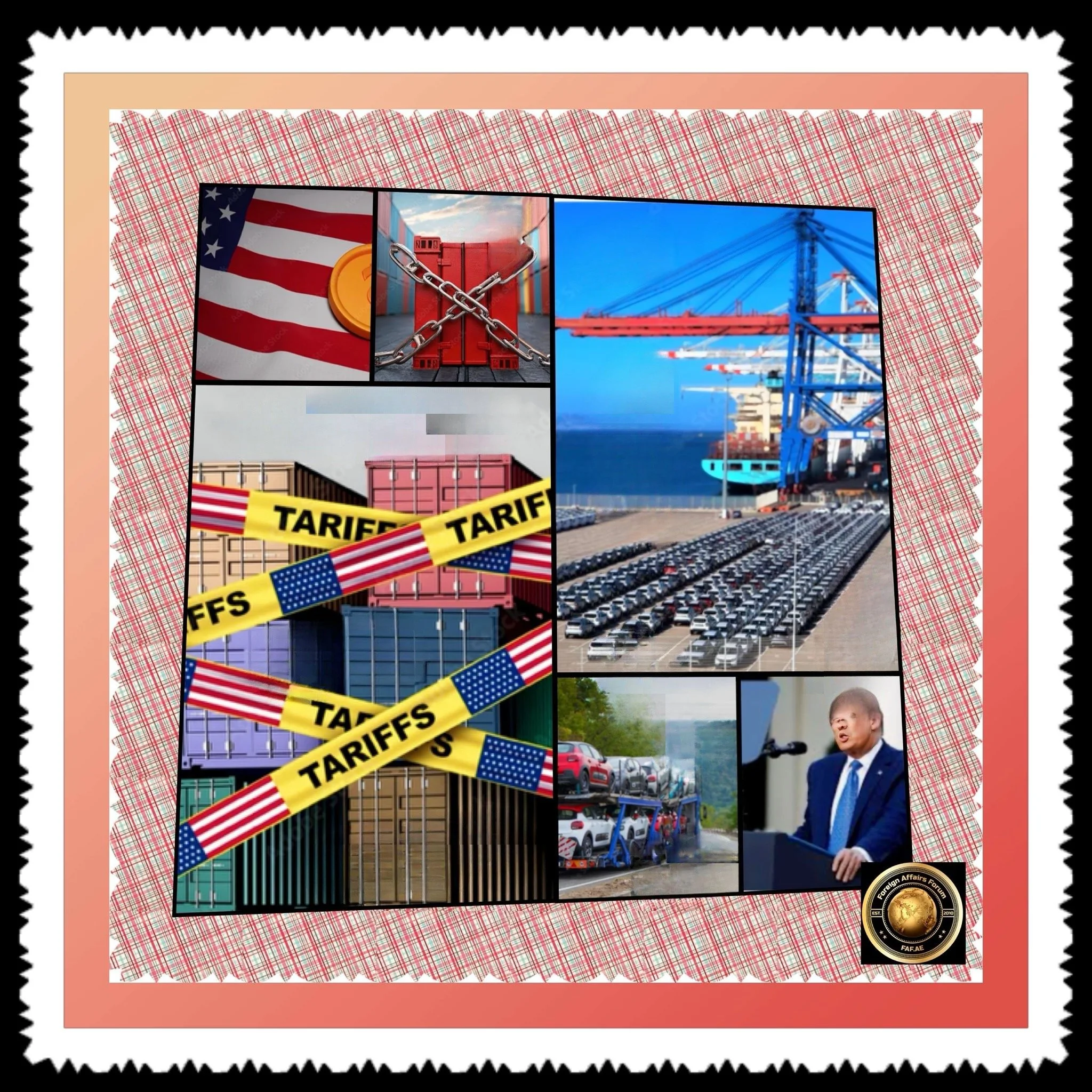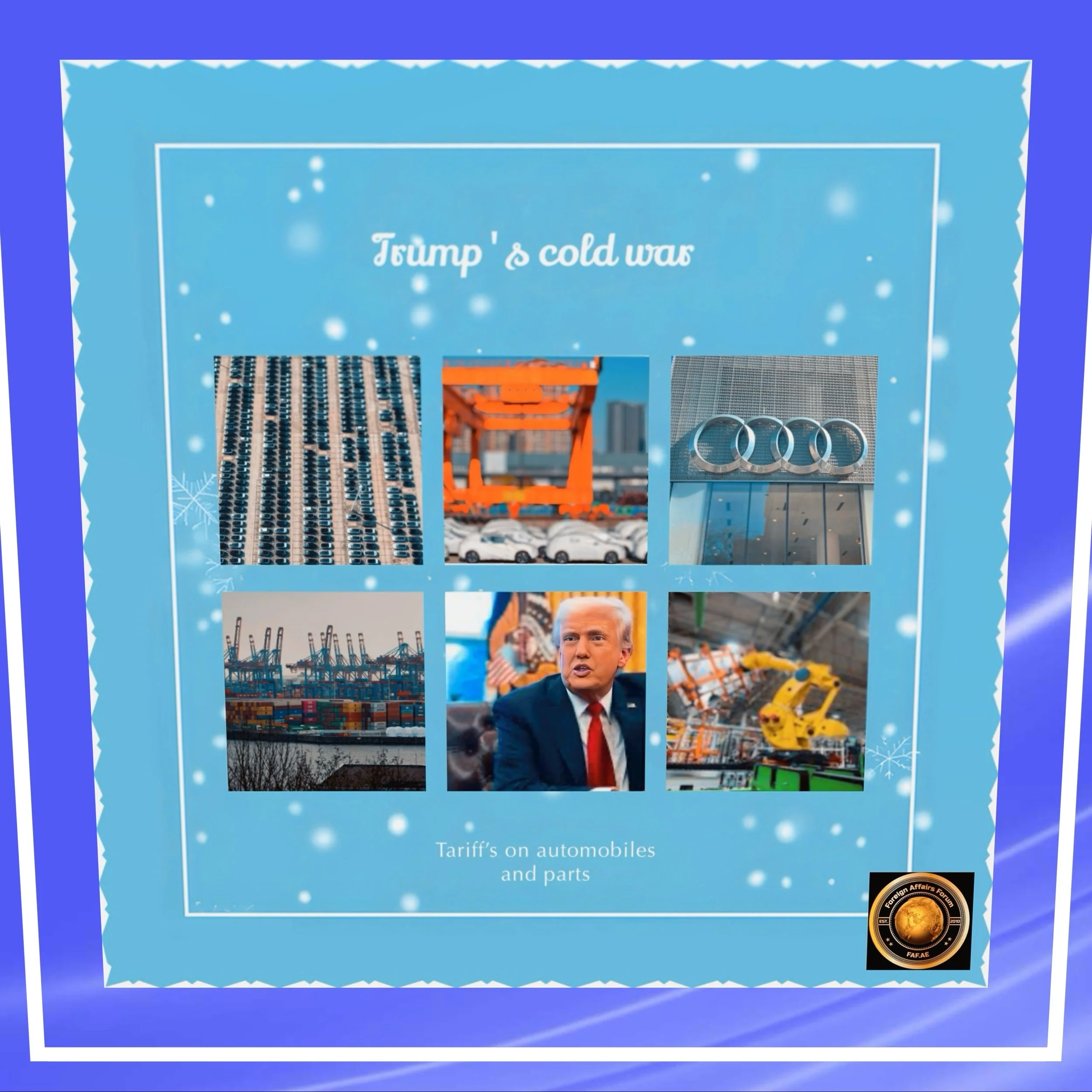Short-Term Economic Impacts of the 25% Auto Tariffs on the U.S. Economy
Introduction
President Donald Trump’s announcement of 25% tariffs on imported automobiles and parts, effective April 2, 2025, has triggered immediate economic repercussions across financial markets, consumer sectors, and international trade relations.
These measures, framed as a strategy to revitalize domestic manufacturing, are expected to reshape the U.S. economic landscape through heightened inflation, supply chain disruptions, and market volatility in the coming months.
Financial Market Volatility
Stock Market Declines
The tariffs sparked an immediate sell-off in equity markets, reflecting investor anxiety over escalating trade tensions.
On March 26, 2025, the S&P 500 fell 1.1% (64 points), the Dow Jones Industrial Average dropped 0.3% (130 points), and the Nasdaq Composite declined 2%, driven by tech and automotive stocks losses. Automakers bore the brunt of the downturn:
General Motors (GM) shares fell 3–8% in after-hours trading, reflecting fears of disrupted North American supply chains.
Ford and Stellantis (Chrysler and Jeep's parent company) dropped 4.5% as their reliance on Mexican and Canadian parts became a liability.
Despite producing vehicles domestically, Tesla saw shares plummet 5.5–6% due to its dependence on imported components and broader market pessimism.
Asian markets mirrored this turbulence, with Toyota, Honda, and Hyundai shares declining 3% as investors priced in reduced U.S. market access.
Consumer Price Inflation and Demand Shocks
Projected Vehicle Price Increases
Analysts warn that tariffs will significantly inflate car prices, compounding affordability challenges. Key estimates include:
$2,000–$12,200 per vehicle
Anderson Economic Group’s range for price hikes, with luxury imports and models reliant on foreign parts facing the steepest increases.
$6,000 average increase
Cox Automotive’s forecast for vehicles like the Toyota Tacoma and Chevrolet Equinox depends on Mexican and Canadian assembly.
These spikes threaten to price out middle-class buyers, exacerbating a decline in new car sales.
With the average new vehicle already costing $49,000, demand destruction could reduce auto sales by 20–30%, according to industry analysts.
Secondary Inflationary Pressures
Beyond showroom floors, tariffs will ripple through the economy
Used car markets
Prices may rise as consumers defer new purchases, tightening supply for budget-conscious buyers.
Repair costs
Tariffs on imported parts like engines and transmissions could raise maintenance expenses by 15–25%, straining household budgets.
Insurance premiums
Higher repair costs may lead insurers to adjust rates upward, particularly for newer models with complex components.
Supply Chain Disruptions and Production Halts
North American Manufacturing Crisis
The tariffs destabilize tightly integrated supply chains under the USMCA
Production cuts
Cox Automotive forecasts a 30% reduction in daily output (20,000 fewer vehicles) by mid-April as automakers struggle to absorb tariff costs.
Parts shortages
Critical components like transmissions and semiconductors, often sourced from Mexico and Canada, face delays and price hikes.
Stellantis warned that Ram pickup production could halt entirely without tariff exemptions.
Compliance Challenges
While the White House allows importers to certify “U.S. content” for partial exemptions, automakers report confusion over implementation.
For example, GM and Ford rely on 60% of imported parts for domestically assembled vehicles, complicating compliance efforts.
The lack of a transparent certification system for USMCA-compliant parts has left factories in limbo, delaying production resumptions.
Trade Relations and Retaliatory Risks
International Backlash
Major trading partners have pledged retaliation, threatening U.S. exports:
European Union
Commission President Ursula von der Leyen condemned the tariffs as “bad for businesses and consumers,” vowing to defend EU interests.
Canada
Prime Minister Mark Carney labeled the tariffs a “direct attack,” warning of reciprocal measures targeting U.S. agricultural exports.
South Korea and Japan
Hyundai and Toyota face profit squeeze, with Tokyo considering tariffs on U.S.-made machinery and pharmaceuticals.
CANADIAN PRIME MINISTER MARK CARNEY
"We will defend our workers, we will defend our companies, we will defend our country, and we will defend it together."
CHINESE FOREIGN MINISTRY SPOKESPERSON GUO JIAKUN
"No country's development and prosperity are achieved by imposing tariffs."
GERMAN ECONOMY MINISTER ROBERT HABECK
"What counts now is to have a firm response to these tariffs from the EU. It must be clear that we will not take this lying down."
"The EU must now give a firm response to the tariffs - it must be clear that we will not back down in the face of the USA."
U.K. FINANCE MINISTER RACHEL REEVES
"Trade wars are no good for anyone."
"We are working intensely these next few days to try and secure a good deal for Britain. I recognize how important this is."
NATIONAL FOREIGN TRADE COUNCIL, WHICH REPRESENTS MANY U.S. COMPANIES, VP TIFFANY SMITH
“Placing tariffs on imports of autos risks damaging the competitiveness and export readiness of an industry that relies on integrated international supply chains and markets for its success.
“We urge the administration to focus on the competitiveness of the U.S. auto industry and prioritize market opening opportunities for auto companies who manufacture vehicles for export in the United States.”
USMCA Fragmentation
The tariffs undermine the United States-Mexico-Canada Agreement, which has governed continental auto trade since 2020.
Ontario Premier Doug Ford warned North American production could “halt within 10 days” if retaliatory measures disrupt part flows.
Labor Market Strains
Mixed Impacts on Employment
While the United Auto Workers (UAW) praised the tariffs as a “victory for autoworkers,” immediate job risks loom:
Production slowdowns
Factories idling lines may furlough workers, particularly in Michigan and Ohio, where parts manufacturing is concentrated.
Long-term uncertainty
AutoForecast Solutions estimates 3 million manufacturing, dealerships, and logistics jobs are exposed to demand declines.
Fiscal and Monetary Policy Challenges
Revenue vs. Economic Costs
The administration projects $100 billion annually from tariffs, but critics highlight offsetting factors:
Reduced sales tax revenue
Fewer car sales could lower state and local tax receipts.
Retaliatory tariffs
Targeting U.S. exports like soybeans or liquefied natural gas may erase net gains.
Federal Reserve Dilemma
With inflation already above target, the tariffs complicate monetary policy. St. Louis Fed President Alberto Musalem warned of “higher inflation and lower growth,” raising stagflation risks if consumer spending falters.
Conclusion
A Precarious Short-Term Outlook
In the immediate term, the 25% auto tariffs will strain the U.S. economy through:
Consumer inflation erodes purchasing power and suppresses demand.
Supply chain paralysis disrupting production and employment.
Market volatility deterring investment in automotive and tech sectors.
Trade retaliation jeopardizes export-dependent industries.
While the administration frames tariffs as a catalyst for domestic manufacturing, short-term disruptions threaten to overshadow potential long-term gains.
The success of this policy hinges on rapid supply chain reshoring—a process economists estimate will take 3–5 years—leaving the economy vulnerable to stagflation and geopolitical friction in the interim.




